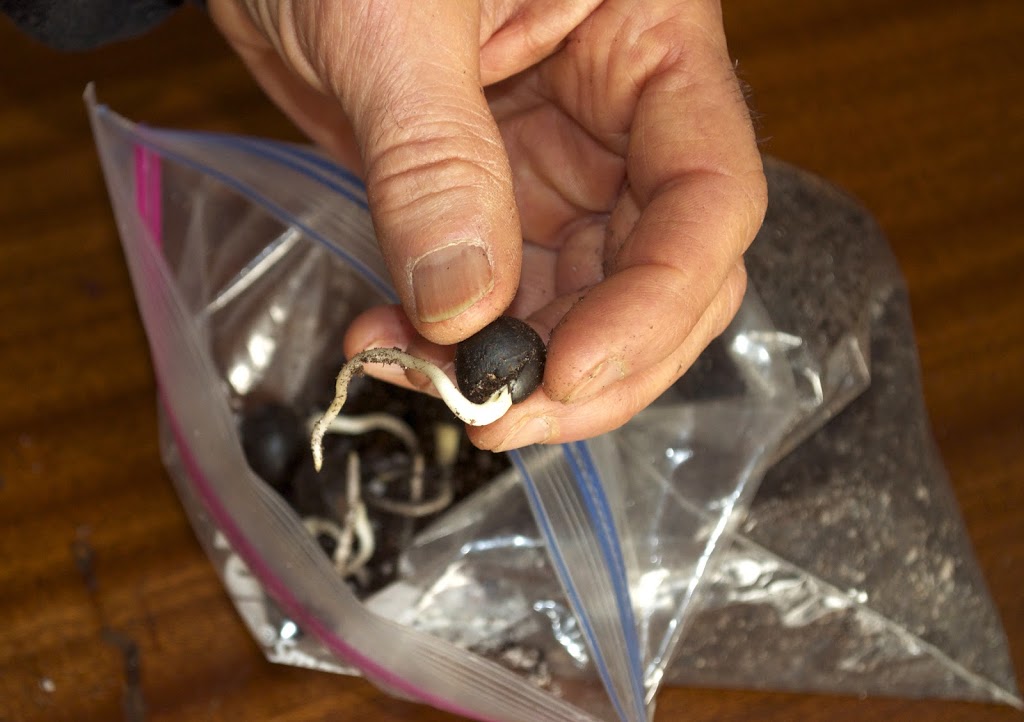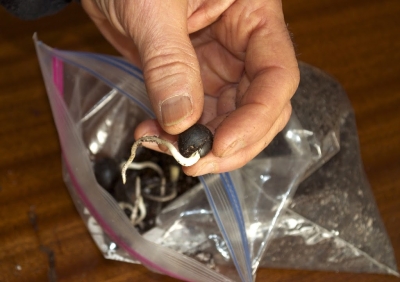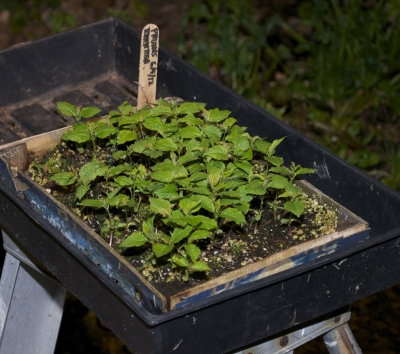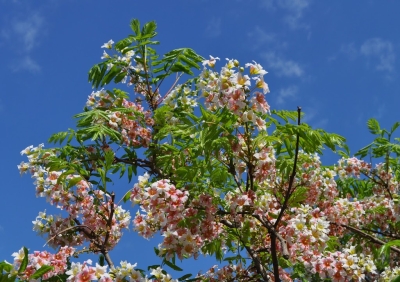AWESOME BLOSSOMS & RATIONALITY
Wow!!
With blossoms spent on forsythias, lilacs, fruit trees, and clove currants, spring’s flamboyant flower show had subsided – or so I thought. Pulling into my driveway, I was pleasantly startled by the profusion of orchid-like blossoms on the Chinese yellowhorn tree (Xanthoceras sorbifolium). And I again let out an audible “Wow” as I stepped onto my terrace, when three fat, red blossoms, each the size of a dinner plate, stared back at me from my tree peony.

Both plants originate in Asia. Both plants are easy to grow. Both plants have an unfortunate short bloom period, more or less depending on the weather. Fortunately, both plants also are attractive, though more sedately, even after their blossoms fade.
The tree peonies have such a weird growth habit. I had read that they were very slow to grow so was quite pleased, years ago, when each of the branches on my new plant extended its reach more than a foot by the end of its first growing season. Tree peony is a small shrub; at that rate mine would be full size within a very few years. Or so I imagined.
The tree peony still grows that much every year. But every year many stems also die back about a foot, more following cold winters. No matter, though, because every May giant silky, red flowers unfold from the remaining fat buds along the stem.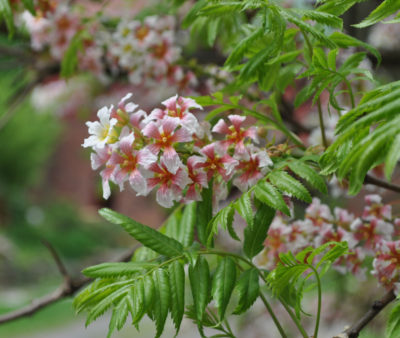
I originally planted Chinese yellowhorn not for its flowers but for the fruits that follow the flowers. Each fruit is a dry capsule that later in summer starts to split open to reveal within a clutch of shiny, brown, macadamia-sized nuts. Yellowhorn frequently makes it onto permaculture plant lists, with the edible nuts billed as having macadamia-like flavor also. Not true. I’ve tried them raw and roasted. Roasting does change the flavor, but raw or roasted, the flavor is bad.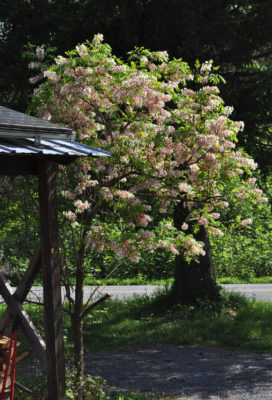
Still, those blossoms make yellowhorn well worth growing. And after the blossoms fade, this small tree is adorned with shiny, lacy leaves. Much like the tree peony, yellowhorn grows many new stems each year, and many of the stems die back, not necessarily from winter cold but because they’re seemingly deciduous. I tidied the tree up last week by pruning off all the dead stems.
Out With You-All
Today, May 25th, with temperatures around 90 degrees F., I may not be able to restrain myself. It’s hard to imagine that temperatures could still plummet below freezing at least one night sometime in the next week or so. I’ve already ignored that “should” and a few days ago moved houseplants outdoors.
Why the rush? First of all, houseplants enjoy growing outdoors more than growing indoors. Outside, breezes rustling leaves and stems make for stronger, stockier growth and rain showering the leaves washes off a winter’s accumulation of dirt and grime.
After a winter indoors, the plants do need to acclimate to these conditions, which is why they start their outdoor vacation on the terrace on the north side of the house, which blocks wind and, for part of the day, sunlight.
I also urged the plants outdoors because populations of aphid and scale insects were outgrowing the appetites of the ladybugs crawling up and down the stems. Outside, natural predators keep pests in check and, if necessary, I can spritz the plants down to knock off pests and spray soap or summer oil to kill them without worrying about getting spray or oil on windows, walls, or furniture.
The Rush On Sweet Corn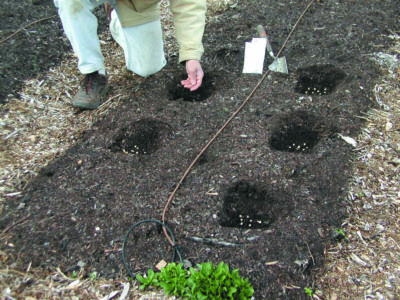
Even tender seeds, such as corn, squash , and beans, can be sown now. The earth has warmed enough for decent germination, and by the time the plants are up, warm weather will have settled in for the season.
Tomorrow I plant sweet corn. Kinky as it sounds, I’m anxious to sink my teeth into a freshly picked ear.
Upcoming Workshop
June 24, 1-4:30 pm, DRIP IRRIGATION WORKSHOP at the garden of Margaret Roach in Copake Falls, NY. Don’t wait for dry weather to learn about this easy and better (for you and plants) way to water, including participation in hands-on installation. For more information and registration, www.leereich.com/workshops.

